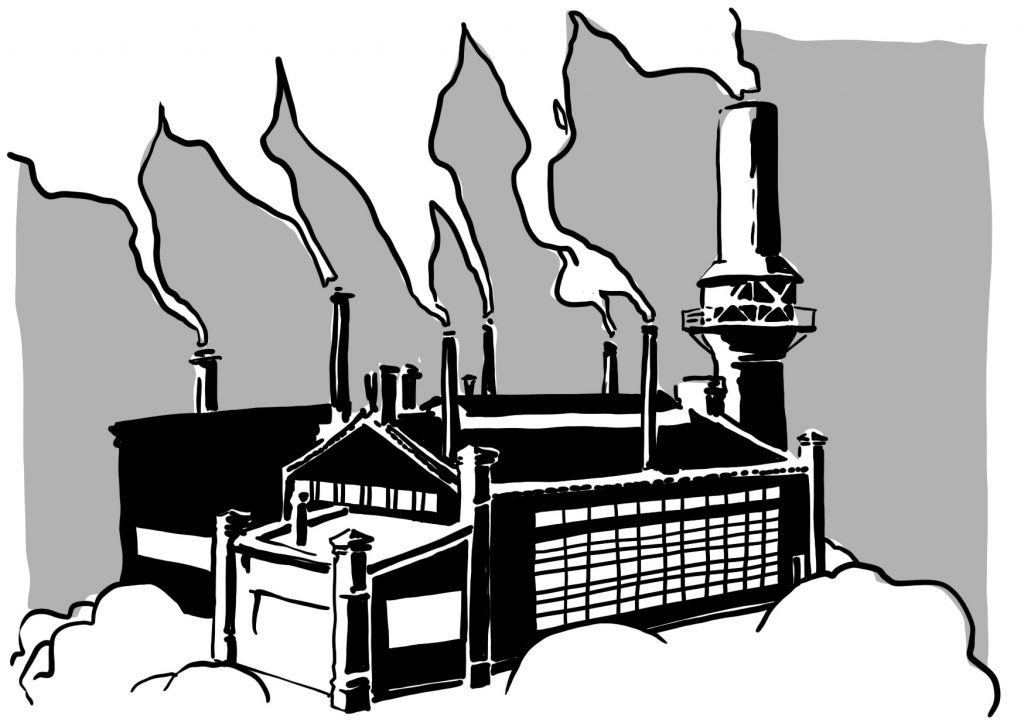India’s economic growth, coupled with its urbanisation and swelling population is putting severe pressure on cities’ limited resources. With some of the most polluted cities in the world and increased waste management issues, India needs to adopt circular economy initiatives. Sadly, circularity as a concept is yet to be explored in the country.
After moving to Berlin, there are a lot of things I miss about Delhi, my home city. The food, the colours, and the vibe, to name a few. However, one thing I absolutely do not miss is the smell and the taste of a polluted air. With Air Quality Index levels on average being between 200-300, the air of the city almost chokes you. For reference, Berlin’s average Air Quality Index is on average much below 40 and is considered “good”. Delhi, with its smog blankets, unbridled traffic jams, and swelling population, is a prime example of how unplanned urbanisation can lead to serious public healthcare issues with urban poor disproportionally bearing the brunt of it.
According to the United Nations’ World Cities Report 2018, 55% of the world’s population lives in urban areas, a proportion that is expected to increase to 68% by 2050. The shift to urbanisation along with the overall growth of the world’s population could add another 2.5 billion people to urban areas by 2050, with close to 90% of this increase taking place in Asia and Africa. It is also predicted that by 2030, we will have 43 megacities with more than 10 million inhabitants, most of them in developing regions. With a population of 1.37 billion, India is projected to be the world’s most populous country by the end of this decade. Delhi and Mumbai are two of the most densely populated cities in the world with a population of more than 20 million each. India’s urbanisation is giving rise to its waste generation.
Cities are a hub of economic activities and industries. However, the ‘linear’ economic approach is causing cities to consume 78% of the world’s energy and produce more than 60% of greenhouse emissions. Along with Delhi as the most polluted capital city in the world, India is home to 22 of the 30 most polluted cities globally, making them unsustainable to live in. In terms of Municipal Solid Waste (MSW) generation, Delhi grew at a rate of more than 2000% during the period 1971 to 2015. The level of per capita waste generation of three large Indian cities – Chennai, Kolkata, and Mumbai, was almost at par with the level of some of the OECD member countries. Most of the waste is disposed of at either landfills or unmanaged dumpsites, resulting in greenhouse gases emissions and causing far-reaching environmental and health hazards.
The cities face institutional and financial constraints and are already overburdened with inadequate infrastructure and integrated urban policies. As the Indian economy continues to grow, the cities’ material and energy requirements along with the emissions and waste generation will continue to exacerbate the existing issues, making the cities unliveable. These issues were further highlighted during the COVID-19 outbreak when India’s urban dwellers bore the maximum brunt of disease incidence. Indian cities need to transform radically to create a liveable, healthier, and sustainable environment for their residents.
Moving from Linear to Circular Cities
One of the Sustainable Development Goals 2030 (SDGs) is making cities inclusive, safe, resilient, and sustainable. Creating sustainable cities involves investing in urban transportation, creating green public spaces, and improving urban planning and management inclusively. We can achieve that by transitioning towards circular economies. The circular economy is a model of production and consumption that creates a closed-loop cycle of products where we eliminate waste through reuse, repurpose, recycle, and recovery of raw materials. In this way, the life cycle of products is extended. Implementing a circular economy in cities can reduce congestion and pollution, eliminate waste as well as improve air quality making them liveable.
The Ellen MacArthur Foundation’s 2016 report on India mentioned that by adopting circular economy principles, India can earn the annual benefits of approximately $624 billion in 2050 – equivalent to 30% of India’s current Gross Domestic Product (GDP). It would also lead to 44% fewer greenhouse emissions in 2050 resulting in a better quality of life for its residents. A key focus area identified is constructing cities and infrastructure in a way that meets the needs of India’s expanding population.
In the last few years, the concept of smart cities gained momentum and is seen as a vehicle to drive sustainability. The concept has started to get popular in India as well. In 2015, the Government of India launched the Smart Cities Mission to “drive economic growth and improve quality of life through comprehensive work on social, economic, physical and institutional pillars of the city”. Under this Mission, 100 cities were selected in the country.
By incorporating circular economy in smart city projects, India can create a robust infrastructure for water, sanitation and waste management. It can help in designing sprawling urban green spaces integrated with green urban mobility solutions that will significantly improve the air quality in the cities. Digitalisation can play a vital role in smart city development. Real-time data helps policymakers and agencies keep up with developments in their city and respond effectively and efficiently. For instance, big data can help in traffic control easing issues of congestion and pollution on roads.
Other developing economies are implementing circular economy policies in their efforts to develop sustainably. A 2020 research paper on the circular economy in Latin America and the Caribbean (LAC) documented that the region has launched more than 80 public initiatives relating to the circular economy. These initiatives are helping LAC countries in achieving SDGs. For instance, a new technology that uses 3D printing of low-cost houses with a mix of concrete, water and other materials is being used to construct affordable housing for low-income neighbourhoods in El Salvador and Mexico as a pilot project. In Chile, a government-backed social innovation project created a product that retained 97% of particular emissions produced by the combustion of biomass in domestic stoves. This led to a significant reduction in the air pollution in the city of Coyhaique benefiting the local population.
Pradhan Mantri Awas Yojana – Urban (PMAY-U) is India’s flagship mission to address the housing needs of all urban households including those from economically weaker sections and slum dwellers by 2022, when India completes 75 years of its independence. It is a tall task to accomplish, and India can learn from these circular economy initiatives of LAC countries to fulfil its mission.
Indian cities are at the heart of their economic development. The burgeoning economy coupled with limited resources and a high population growth rate necessitates a development plan based on socio-economic and environmental sustainability which is something circularity propagates. However, the circular economy as a concept is yet to get attention in India’s socio-political environment and remains unexplored. India has started a number of recycling and reusing initiatives which includes a blanket ban on single-use plastic. However, according to the United Nations, circular economy is much more than that. It creates “an economy in which waste and pollution do not exist by design, products and materials are kept in use, and natural systems are regenerated”.
Since my arrival in Berlin, I end my days by opening my windows and taking deep breaths as I cherish the taste and the crispness of clean air. I can only hope that in the future, people back home will get to enjoy the same in their own city. Adopting circularity can help Indian citizens to lead a healthier life without trifling with the needs of future generations.
 I am a first year MPP Student from Delhi, India. I have bachelors in Business Studies from the University of Delhi and have 9 years of work experience in policy and communications field with a special focus on cities’ climate policies and urban transportation. I am keen to explore the intersection of climate change and public healthcare. I am deeply passionate about food, bollywood, and dog videos. If not infront of the laptop, I can be found singing an dancing randomly at some corner of Berlin.
I am a first year MPP Student from Delhi, India. I have bachelors in Business Studies from the University of Delhi and have 9 years of work experience in policy and communications field with a special focus on cities’ climate policies and urban transportation. I am keen to explore the intersection of climate change and public healthcare. I am deeply passionate about food, bollywood, and dog videos. If not infront of the laptop, I can be found singing an dancing randomly at some corner of Berlin.
